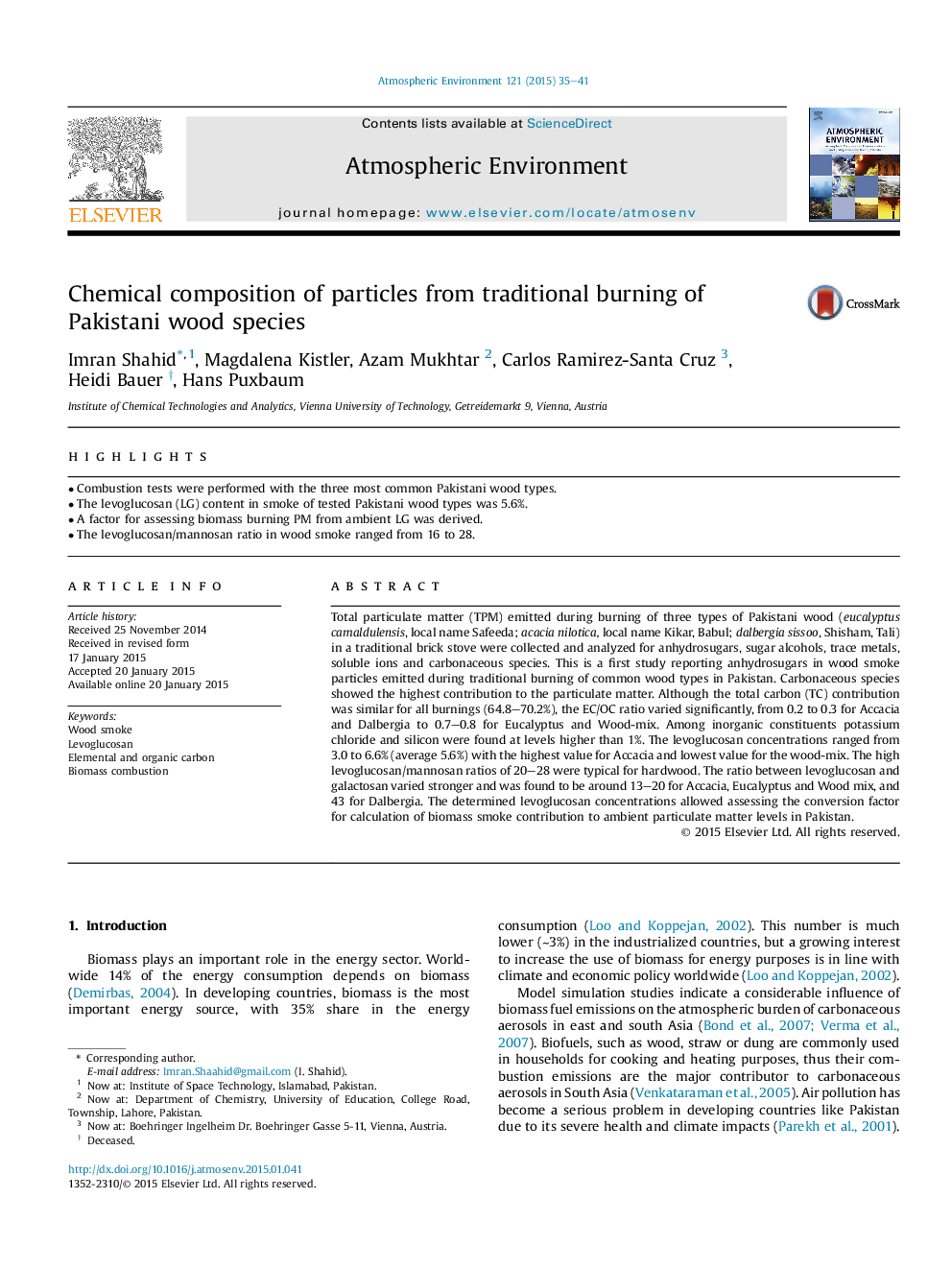| کد مقاله | کد نشریه | سال انتشار | مقاله انگلیسی | نسخه تمام متن |
|---|---|---|---|---|
| 6337416 | 1620350 | 2015 | 7 صفحه PDF | دانلود رایگان |
- Combustion tests were performed with the three most common Pakistani wood types.
- The levoglucosan (LG) content in smoke of tested Pakistani wood types was 5.6%.
- A factor for assessing biomass burning PM from ambient LG was derived.
- The levoglucosan/mannosan ratio in wood smoke ranged from 16 to 28.
Total particulate matter (TPM) emitted during burning of three types of Pakistani wood (eucalyptus camaldulensis, local name Safeeda; acacia nilotica, local name Kikar, Babul; dalbergia sissoo, Shisham, Tali) in a traditional brick stove were collected and analyzed for anhydrosugars, sugar alcohols, trace metals, soluble ions and carbonaceous species. This is a first study reporting anhydrosugars in wood smoke particles emitted during traditional burning of common wood types in Pakistan. Carbonaceous species showed the highest contribution to the particulate matter. Although the total carbon (TC) contribution was similar for all burnings (64.8-70.2%), the EC/OC ratio varied significantly, from 0.2 to 0.3 for Accacia and Dalbergia to 0.7-0.8 for Eucalyptus and Wood-mix. Among inorganic constituents potassium chloride and silicon were found at levels higher than 1%. The levoglucosan concentrations ranged from 3.0 to 6.6% (average 5.6%) with the highest value for Accacia and lowest value for the wood-mix. The high levoglucosan/mannosan ratios of 20-28 were typical for hardwood. The ratio between levoglucosan and galactosan varied stronger and was found to be around 13-20 for Accacia, Eucalyptus and Wood mix, and 43 for Dalbergia. The determined levoglucosan concentrations allowed assessing the conversion factor for calculation of biomass smoke contribution to ambient particulate matter levels in Pakistan.
Journal: Atmospheric Environment - Volume 121, November 2015, Pages 35-41
